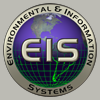
|
Greg Anderson Principal Physicist gma@apl.washington.edu Phone 206-543-4648 |
Research Interests
Sonar System Performance Modeling, Simulation, Optimization, Inversion, Statistics, Computational Intelligence
Biosketch
Gregory Anderson designs and develops tools for ocean sensor acoustic performance prediction, deployment optimization, and environmental parameter estimation (inversion), primarily for U.S. Navy anti-submarine warfare (ASW) tactical decision aids. His areas of expertise are system design, digital modeling and simulation, statistics, optimization, and parallel computing. Mr. Anderson joined the Laboratory's professional staff in 1990.
Education
B.S. Agriculture, University of Idaho, 1974
B.S. Applied Mathematics, University of Idaho, 1975
M.S. Electrical Engineering, University of Idaho, 1980
|
Publications |
2000-present and while at APL-UW |
3-D filter methods for sensor optimization Krout, D.W., J. Hsieh, M. Antonelli, M. Hazen, and G.M. Anderson, "3-D filter methods for sensor optimization," U.S. Navy J. Underwater Acoust., 61, 137-148, 2011. |
15 Jan 2011 |
An at-sea, autonomous, closed-loop concept study for detecting and tracking submerged objects Stevenson, J.M., et al., including J. Luby, R.T. Miyamoto, M. Grund, G. Anderson, and M. Hazen, "An at-sea, autonomous, closed-loop concept study for detecting and tracking submerged objects," U.S. Navy J. Underwater Acoust., 59, 671-690, 2009. |
1 Jun 2009 |
Distributed environmental inversion for multi-static sonar tracking Pitton, J., A. Ganse, G. Anderson, and D.W. Krout, "Distributed environmental inversion for multi-static sonar tracking," Proc., 9th International Conference on Information Fusion, 10-13 July, Florence, Italy, 6 pp., doi:10.1109/ICIF.2006.301710 (IEEE, 2006). |
More Info |
10 Jul 2006 |
|||||||
|
This paper presents an approach for adapting a tracking algorithm to the acoustic propagation environment. This adaptation is performed by incorporating the expected target signal-to-noise ratio (SNR) into the data association step through the measured contact amplitude. In this work, expected SNR is provided via acoustic modeling; estimates of bottom loss and scattering strength, required by the acoustic model, are obtained via inversion of the acoustic model based on measured multi-static sonar reverberation data. This paper shows that the use of distributed sensors provides improved estimates of the environmental parameters, and hence better estimates of the expected SNR. |
|||||||||






